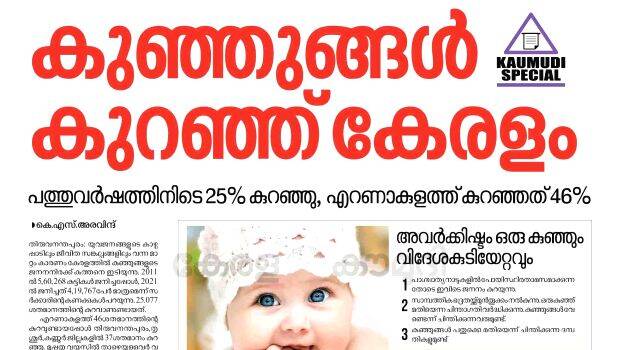

THIRUVANANTHAPURAM: The sharp fall in the birth rate in Kerala will first be reflected in the primary classes. As the number of children admitted decreases, the divisions will also decrease. Teaching posts will also have to be cut.
The decline in birth rates has led to an increase in the number of elderly people and a decrease in the number of young people in developed countries. The situation is similar in Kerala.
Kerala Kaumudi had reported that the birth rate has decreased by 25 percent in ten years. The reason is the increase in the number of families with only one child and the number of people who think they don't want children.
The situation where the number of constituencies will be reduced and thus the number of people's representatives is predicted. Constituencies are determined on the basis of population. A reduction in the number of children in the population may seem good to some extent, but experts say it can have far-reaching consequences.
Total Fertility Rate 1.8
Only if the total fertility rate of a country is 2.1 will the population remain the same. It is currently 2.32 on a global basis. The total fertility rate of Kerala is 1.8. It was 2.0 in the first survey conducted in 1992-93. This means that families in Kerala do not have two children on average.
Those over 60 will be 20 percent
According to the 2001 census, the number of elderly people in the state population was 9.79 percent. In 2011 it was 12.83. In 2021, it reached 15.63 percent. By 2026, 20 percent of the population will be over 60 years of age.
At present, about 45 lakh people in Kerala are over 60 years of age. Most of them are women and most of them are widows. As the number of senior citizens increases, a situation where they live in isolation will also arise.